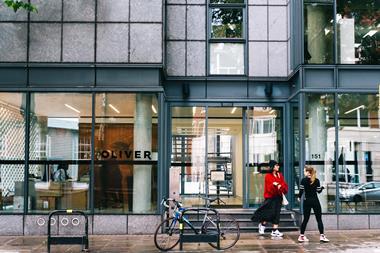Chris Kenning, chief executive of Stubben Edge on how to avoid getting locked into legacy systems that prevent an insurance business from meeting the demands of the modern market
I popped back to the office the other day to grab something and, as I did, I looked out on Cornhill at the many buildings that by this time of year would have been bustling and saw them empty. It was very sobering.
A curious thought took hold, something we’ve all found ourselves saying a lot this year: “If I knew then what I know now”, we might have not signed so long a lease.
I fear technology systems face a similar fate for many insurers, of being simply a front, concealing a legacy business model created by traditional insurers.
The payment for these systems is designed to catch us out in this way too. Like a tenancy agreement we’ve not properly read, we pay these legacy costs when we pay the traditional insurers’ premiums and then, when we need it to change, we’re stuck battling it out with the ‘leaseholders’.
The products we want to offer are also changing with the tides. As life and cyber cover enjoy a renaissance during the Covid-19 pandemic, nobody wants to feel limited to offering one product – particularly when products themselves are becoming a marketplace for yet more insurance products.

A recent survey on remote working during the pandemic by Eskenzi PR and OnePoll found that 91% of the general working population would like to continue to work from home, whereas only 9% would want to work in the office full-time.
Similarly, as many workers find themselves preferring remote solutions to costly commutes to corporate offices, many insurers are finding a flexible approach or a partnership to be more beneficial.
Instead of paying over a long period of time for a building that may become susceptible to security problems, and one you can’t change as you don’t truly own it, why not simply say you’ll work with the architect to make changes and, if the building is profitable, he takes his fee upon success and growth?
In this scenario, you can have the architect build your extensions, create a whole new building, or simply make the space that suits you, regardless of what’s going on outside.
Right now, insurers are facing the most exciting and trying time of their industry’s history and they’re doing it with systems that were just not designed for this kind of change.
I mean, consider the recent Debenham’s closure, a brand that suffered the curse of inflexible leases repeatedly. It makes my heart sink reading similar ‘five-year’ tech contract announcements in the media.
Insurers looking to take advantage of the market are investing increasing amounts in technology and choosing tried and tested big name brands.
But in doing so, they are locking into long-term contracts, the need to run every change past the development house and the fact that, unlike freehold improvements, you aren’t investing in your business but losing the improvements at the end of your lease.
While you might not get ‘shot for buying IBM’, you might just find yourself slipping down their priority list by the day as a small business.
Therefore, smaller insurers need a niche and nimble solution that puts them back in the fast lane, without locking them in.
At Stubben Edge, we have developed a new way that doesn’t just provide technology that’s bespoke to an insurance business’s needs, but also comes pre-loaded with data, customers, products and APIs that drive growth over time.
This isn’t just technology, it’s the relationships to help you succeed. It’s why we have seen 30% more profit for our clients.














































No comments yet